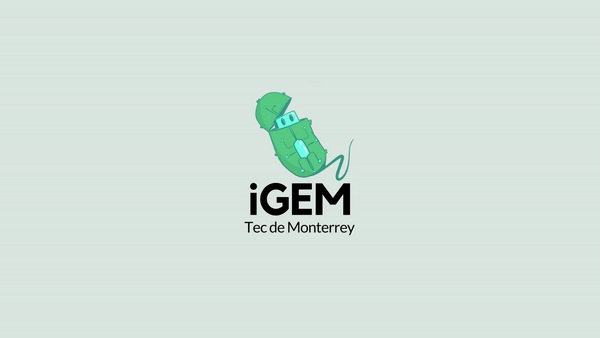
Cas Proteins
The characterization of the production of proteins was mesure using the Biuret method to cuantify the total proteins under the induction with IPTG. Using controls of BL21 0 mM IPTG and BL21 transformed with Cas 1 and Cas 2 0 mM IPTG. We used different concetration of IPTG of 0 mM, 0.1 mM, 0.5 mM and 1 mM, and inducted for 6 hours taking samples every 30 min for 1 mM IPTG and every hour for the rest of the samples. Determining that the concentration of 0.1 mM has the highest concentration of total proteins.

Figure 1: Production of Cas proteins under different concentration and time
Total RNA extraction was performed with IPTG induced E coli transformed with the msDNA construct.
Total RNA extraction was performed with IPTG induced E coli transformed with the msDNA construct. The samples were runned in a 8% polyacriliamide gel.We consider that those bands on the lines with RNAse A are the DNA section of our msDNA, which as ssDNA has a size of 117 bp, however due to its self complementarity. We consider that those bands with RNAse A are the DNA section of our msDNA, which as ssDNA has a size of 117 bp, however due to its self complementarity quality, it forms a hairpin with a size around 58 bp. Total RNA extraction was performed with IPTG induced E colitransformed with the msDNA construct. The samples were runned in a 8% polyacriliamide gel. We consider that those bands with RNAse A are the DNA section of our msDNA, which as ssDNA has a size of 117 bp, however due to its self complementarity quality, it forms a hairpin with a size around 58 bp.

Figure 2: Retron Production
Cotransformation demonstration
In order to demonstrate the functionality of our proyect we made a electrophoresis gel to see the amplification of the two Crispr Arrays in E. Coli Bl21 (DE3). This strain contains 2 Crispr Arrays, one pf 2016 bp long and other one of 996 bp long. The insertion contained 61 bp of difference between the expanded array and the not expanded (33 bp of the optimized oligo and 29 bp for the repeat). We decided to carry out both PCR amplification, due to the equal posibilities of insertion in the different Arrays. In our results we were able to see the correct amplification of the Array 1 (277 bp of length) 216 bp long + 61 bp of their expansion.

Figure 3: Cotransformation Gel. Integration of desired Sequence.
Conclusion
In conclusion, the system is capable of inserting sequences inside of CRISPR arrays found in the genome of the bacteria. The SCRIBE system was able to produce a sequence induced by IPTG. Cas complex was capable also to introduce a sequence in the array. This system is expected to be used in other systems. Further investigation for characterization and identification are recommended.


